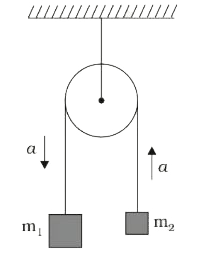Two bodies of mass m1andm2(>m1) have equal linear momentum. Which body possesses greater kinetic energy?Solution in Punjabi
Step by step video & image solution for Two bodies of mass m_1 andm_2(>m_1) have equal linear momentum. Which body possesses greater kinetic energy? by Physics experts to help you in doubts & scoring excellent marks in Class 9 exams.
Updated on:21/07/2023Topper's Solved these Questions
Similar Questions
Does work has direction associated with it?
View SolutionIn which of the three media, air, water or iron sound travel the fastest at a particular temperature ?
View SolutionA light body and a heavy body have the same momentum, which of the two bodies will have greater kinetic energy ?
View SolutionA light body and a heavy body have same kinetic energy. Which one has greater linear momentum?
View SolutionA light and a heavy body have equal momenta. Which one has greater K.E
View SolutionA light body and a heavy body have the same kinetic energy. Which one will have a greater linear momentum ?
View SolutionTwo bodies of masses m_1 and m_2(
View SolutionTwo bodies of unequal masses have same linear momentum, which one has greater kinetic energy?
View SolutionTwo bodies of unequal masses have same linear momentum, which one has greater kinetic energy?
View SolutionA light body and a heavy body have same linear momentum . Which one has greater kinetic energy ?
View SolutionA light body and a heavy body have the same kinetic energy. Which one will have greater momentum?
View SolutionTwo bodies of masses m1 and m2 have the same linear momentum. What is the ratio of their kinetic energies?
View SolutionTwo bodies of masses m_1 and m_2 have equal kinetic energies. What is the ratio of their linear momenta?
View SolutionTwo bodies A and B having masses in the ratio of 3:1 possess the same kinetic energy, The ratio of linear momentum of B to A is
View SolutionA light body and a heavy body have same linear momentum. Which one will have greater kinetic energy?
View SolutionTwo bodies of masses m1andm2(<m1) are connected to the ends of a massless cord and allowed to move as shown in figure. The pulley is both massless and frictionless. The acceleration of the centre of mass is (m1−m2)n(m1+m2)2g. Find the value of n.

View Solution
